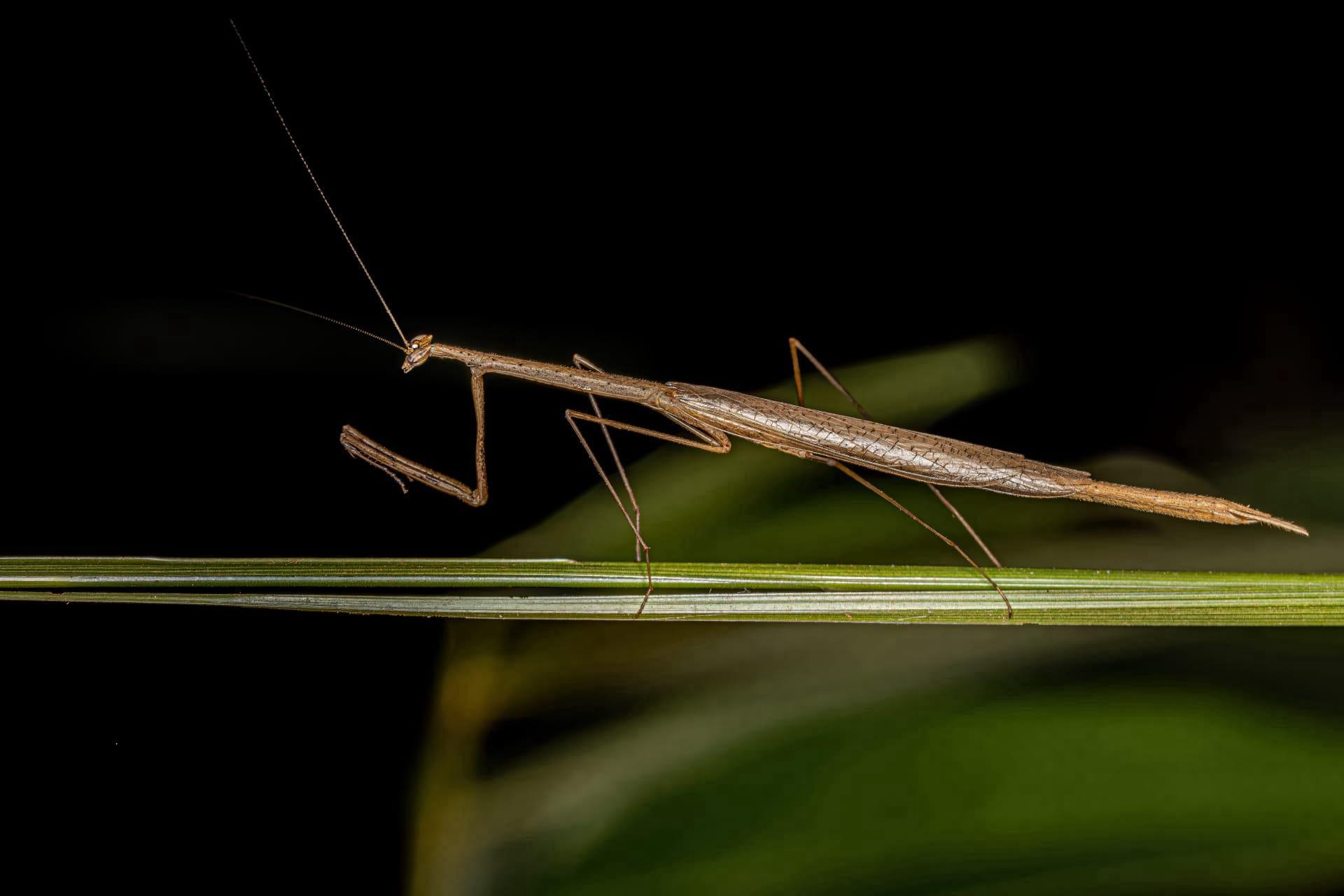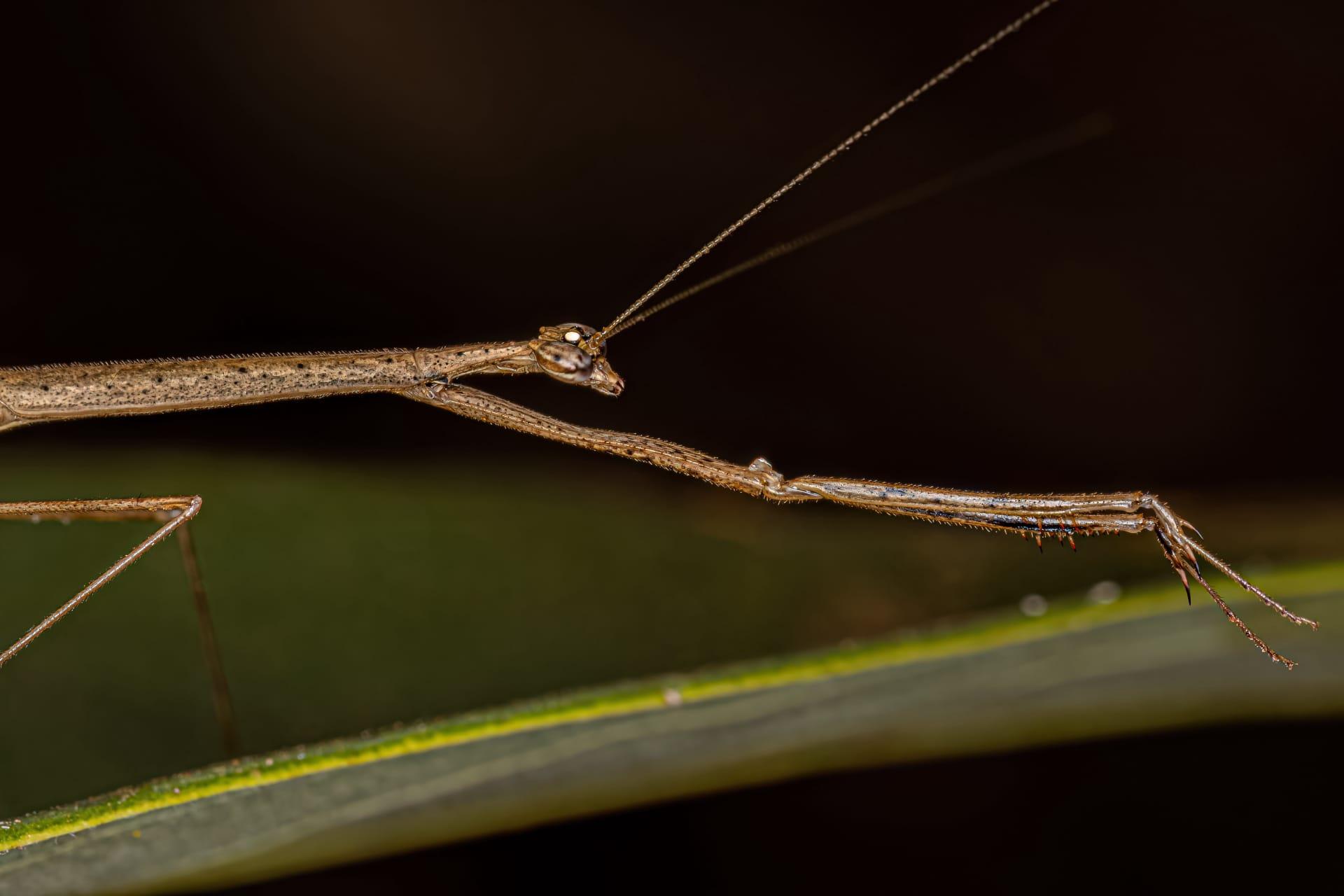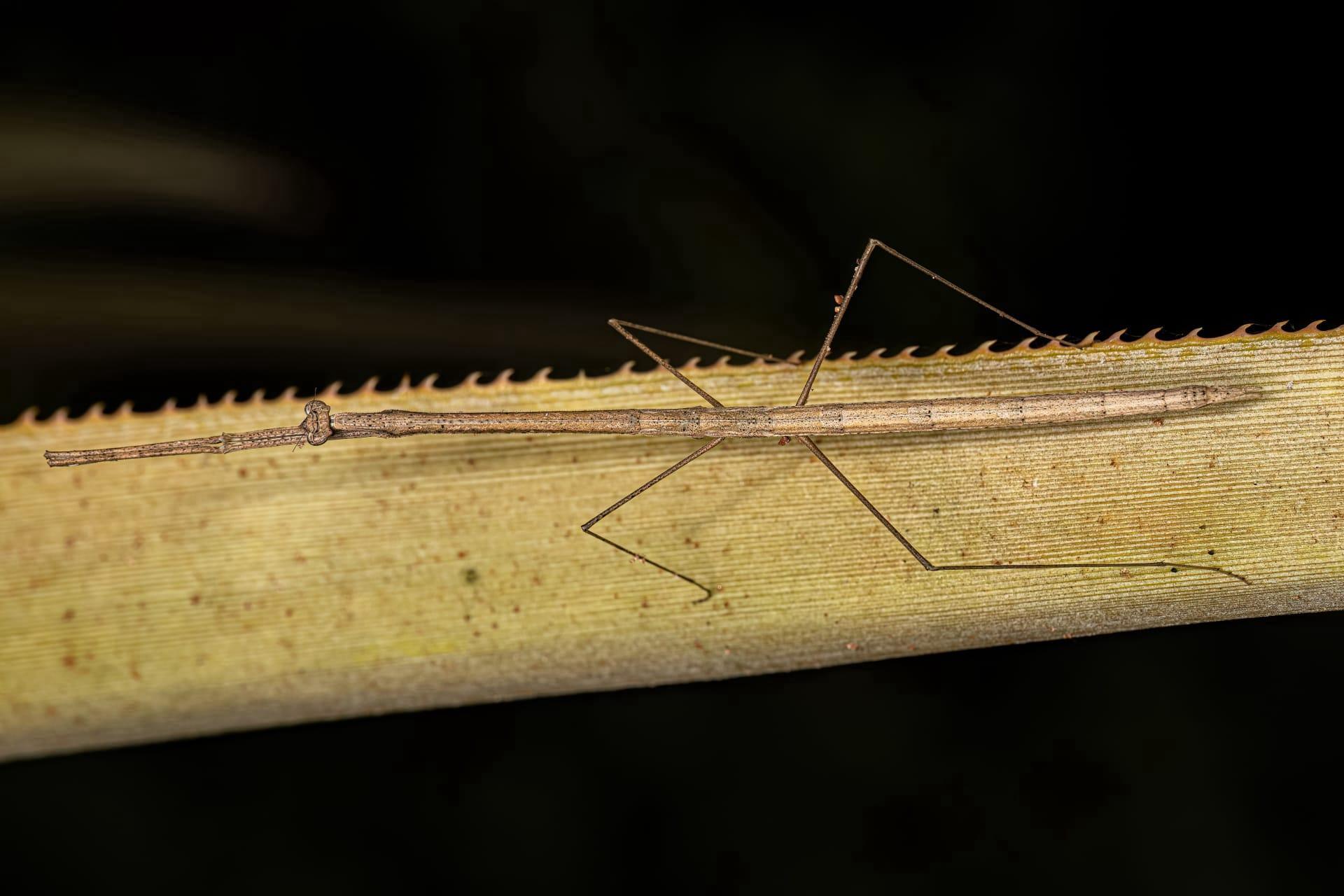Stick Bug
- Home /
- Mini Encyclopedia /
- Animal /
- Stick Bug
1
Stick bugs, scientifically known as Phasmatodea, are an order of insects renowned for their incredible camouflage skills. This order encompasses over 3,000 species, categorized into multiple families like Phasmatidae and Diapheromeridae. Each species varies in size, color, and shape, but they all share a common trait: their remarkable ability to blend into their surroundings. The largest of these, like the Phobaeticus chani, can grow up to 22 inches including their legs, while others remain much smaller. Their color palette ranges from greens and browns to even vibrant pinks, depending on their habitat.
Stick bugs are predominantly found in tropical and subtropical regions around the world, with a high concentration in Southeast Asia, South America, and Australia. These regions provide the perfect environment for stick bugs, offering a variety of vegetation for them to mimic and feed on. However, some species have adapted to temperate climates, and can be found in North America and Europe. Their distribution is closely tied to the availability of specific plants they use for food and camouflage, making them excellent indicators of biodiversity and ecosystem health.

2
Question: Do stick bugs only eat leaves from the plants they mimic?
Answer: This is a common misconception. While it's true that stick bugs primarily feed on leaves, their diet is not limited to the specific plants they resemble. These insects are primarily herbivorous and consume a variety of foliage, including leaves from overhanging trees or shrubs in their habitat. This dietary flexibility is crucial for their survival, especially in environments where their specific mimicked plants may not be abundantly available. It's also worth noting that some species are known to eat mosses and lichens, expanding their dietary options further.

3
One of the most fascinating survival strategies of stick bugs is their mimicry. They have evolved to resemble sticks, branches, or leaves to an astonishing degree, which helps them avoid predators. This camouflage is so effective that they can remain virtually invisible to both predators and humans. Their elongated bodies, slow movements, and coloration are key aspects of this disguise. Some species can even change their color to match seasonal changes in foliage.
Beyond visual mimicry, stick bugs also employ behavioral adaptations for survival. When threatened, many species play dead, a tactic known as thanatosis. By remaining motionless, they enhance their stick-like appearance, further deceiving predators. Some species also have the ability to regenerate lost limbs, a crucial ability if they're caught by a predator. This regeneration can take several molts to complete, during which the stick bug remains vulnerable.

4
In the ecosystem, stick bugs play a significant role as both prey and consumers. As herbivores, they contribute to the control of plant growth, especially in dense forest areas. By feeding on leaves, they help in the natural pruning of plants, which can stimulate new growth and maintain a balance in the vegetation.
Moreover, stick bugs serve as a food source for various predators, including birds, small mammals, and other insects. This makes them an integral part of the food chain, contributing to the biodiversity and health of their habitats. Their presence and abundance are also good indicators of the health of their ecosystem, as they thrive in areas with rich vegetation and suffer in polluted or deforested areas.

5
Film: "The Secret World of Stick Insects" is a documentary produced in the United Kingdom in 2018. This film delves into the mysterious life of stick bugs, showcasing their incredible camouflage skills and survival tactics. Viewers are taken on a journey through various habitats, from dense jungles to temperate forests, exploring the diverse species of stick bugs and their unique adaptations.
Book: "Stick Insects: Masters of Defense" by John Horstman, published in the United States in 2020, provides an in-depth look at the defensive strategies of stick bugs. Horstman, a renowned entomologist, explores the evolutionary aspects of their mimicry and how they have adapted to evade predators. The book is filled with vivid photographs and detailed descriptions, making it a fascinating read for both scientists and nature enthusiasts.
Book: "The Hidden World of Phasmatodea" by Emma Lincoln, released in Australia in 2021, focuses on the ecology and behavior of stick bugs. Lincoln, a prominent biologist, offers insights into their life cycle, dietary habits, and the role they play in their ecosystems. The book is praised for its comprehensive research and engaging narrative, shedding light on these often-overlooked insects.